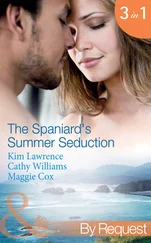Michael Cox - The Meaning of Night
Здесь есть возможность читать онлайн «Michael Cox - The Meaning of Night» весь текст электронной книги совершенно бесплатно (целиком полную версию без сокращений). В некоторых случаях можно слушать аудио, скачать через торрент в формате fb2 и присутствует краткое содержание. Жанр: Старинная литература, на английском языке. Описание произведения, (предисловие) а так же отзывы посетителей доступны на портале библиотеки ЛибКат.
- Название:The Meaning of Night
- Автор:
- Жанр:
- Год:неизвестен
- ISBN:нет данных
- Рейтинг книги:4 / 5. Голосов: 1
-
Избранное:Добавить в избранное
- Отзывы:
-
Ваша оценка:
- 80
- 1
- 2
- 3
- 4
- 5
The Meaning of Night: краткое содержание, описание и аннотация
Предлагаем к чтению аннотацию, описание, краткое содержание или предисловие (зависит от того, что написал сам автор книги «The Meaning of Night»). Если вы не нашли необходимую информацию о книге — напишите в комментариях, мы постараемся отыскать её.
The Meaning of Night — читать онлайн бесплатно полную книгу (весь текст) целиком
Ниже представлен текст книги, разбитый по страницам. Система сохранения места последней прочитанной страницы, позволяет с удобством читать онлайн бесплатно книгу «The Meaning of Night», без необходимости каждый раз заново искать на чём Вы остановились. Поставьте закладку, и сможете в любой момент перейти на страницу, на которой закончили чтение.
Интервал:
Закладка:
And now, at last, I am to show you Evenwood, which I first beheld on that perfect June afternoon in 1850 – an afternoon, perhaps, like the one that had seen the arrival of Dr Daunt and his family twenty years earlier. I see it again in memory, as clearly as on that day.
The village lies, in quiet seclusion, close to a slow-moving tributary of the River Nene, the Even, commonly called the Evenbrook by the local inhabitants, which winds through the Park to join the main river a few miles to the east. A church and adjoining Rectory, a noble Dower House of the late seventeenth century, clusters of picturesque cottages, some outlying farms, and then the great house itself: similar compositions can be found all over England; but Evenwood is like no other place on earth.
The always-sighing reed-beds and the overarching willows, the pale stone houses with their roofs of thatch or Collyweston stone, *the undulating Park with its lake and ancient trees, and in the midst, the faery splendour of Lord Tansor’s residence, are sources of deep and abiding solace for those weary of the quotidian world. The whole place seems to be somehow beyond time, shut in and protected from the meanness of existence by the meandering river, and the gently wooded slopes on either side, which, on a fine day, dissolve into long soft swathes of grey-green.
If you consult Verekker’s dull but dependable Guide to the County of Northamptonshire (a copy of the augmented 1812 edition is now before me as I write), †you will read of Lord Tansor’s seat being ‘pleasantly situated in a well-wooded Park of many acres, planted with noble stands of oak, ash, and elm, and watered by the Even, or Evenbrook. The house, or manor, is built of brick and freestone. The accretions of centuries have bestowed upon the house a pleasing irregularity of form, at once imposing and romantic.’ You will also learn from Verekker the bare architectural facts concerning the house: the licence to crenellate granted in 1330; the Elizabethan extensions to the fortified mediaeval dwelling; the Jacobean refinements; the remodelling by Talman early in the last century; and the improvements lately effected in the Classical style by Henry Holland, who also worked on another of the county’s great houses, Althorp.
What you will not find in Verekker, or in any other guide, is an anatomy of Evenwood’s power to bewitch both soul and sense. Possibly, it is beyond human art to convey the sense of something lost, but eternally present, that such places inspire. In every light, and in every season, it possesses a transcendent beauty; but in summer it is very paradise. Approach it if you can – as I first did – from the south, on a mid-summer afternoon. On entering the Park, you ascend the incline that I have mentioned, at the summit of which you will certainly pause, as I did, to catch your first sight of the great house. To your left, over the low boundary wall, light dances on the river curving gently westwards; and then you glimpse the church – its delicate spire on such a day set against a cloudless sky of deepening blue – facing the ivy-covered Rectory on the far side of a little field of graves.
Proceed a little further. The carriage-drive descends towards the river, crosses it by a fine balustraded bridge, then turns to the right, levelling out to give a fuller view of the house, and the swaying haze of trees behind; then it divides, to sweep either side of a perfect oval of lawn, with a fine Classical group – Poseidon with Tritons – at its centre, before passing through a pair of massive iron gates into an enclosed and gravelled entrance court.
Always your eye is drawn upwards, to a riot of gables and fluted chimneys, and, dominating all, six soaring towers topped with arched, intricately leaded cupolas. Behind the formality of Holland’s frontage, the remains of earlier ages ramble in picturesque confusion: cobbled alleys between high walls, a vaulted cloister opening onto gardens. Tudor brick mingles with smooth ashlar; oriels and battlements oppose Classical columns and pediments. And, in the midst, a sequestered mediaeval courtyard filled with urns and statuary, heavy in summer with the scent of lavender and lilies, and echoing always to the sound of birds and trickling water.
Evenwood. I had wandered its corridors and great rooms in dreams, collected representations of it, greedily hoarded every published account of its history and character, no matter how trite and inconsequential, from William Camden to the pamphlet published in 1825 by Dr Daunt’s predecessor as Rector. For years it had been, not a built thing of stone and timber and glass, which could be touched and gazed upon under the light of sun and moon, but a misty dream-place of unattainable perfection, like the great Pavilion of the Caliphat described so perfectly by Mr Tennyson. *
Now it was spread out before me. No dream, it stood planted deep in the earth that my own feet were treading, washed by the rain of centuries, warmed and illuminated by countless dawns, raised and shaped by dead generations of mortal men.
I was overwhelmed, almost choked by tears, at the first sight of the place that I had seen only with the interior eye. And then – it was almost like the sensation of physical pain – I became certain that I had seen it before; not in books and paintings, not in fancy, but with my own eyes. I said to myself: I have been here . I have breathed this air, heard these sounds of wind through the trees, and the music of distant waters. In an instant I was a child again, dreaming of a great building, half palace, half fortress, with soaring spires and towers reaching to the sky. But how could these things be? The name of this place held dim childhood associations, but no recollection of ever having been brought here. Whence came, then, this certainty of re-acquaintance?
In a kind of daze, confused by the confluence of the real and the unreal, I walked a little further, and the perspective began to shift. Shadows and angles emerged to soften or delineate; definitions hardened, elevations extended and attenuated. A dog barked, and I saw rooks wheeling and cawing about the towers and chimneys, and white doves fluttering. Between high enclosing walls was a fishpond, dark and still, overlooked by two little pavilions of pale stone. As I drew nearer still, details of ordinary human activity began to emerge: planted things, a broom leaning against a wall, window-curtains moving in the warm breeze, smoke drifting up from a chimney stack, a water pail set down in a gateway.
We know, from the account of his life published in the Saturday Review , that Evenwood burst upon young Phoebus Daunt like Paul’s vision. It seemed – they were his words – ‘almost as if I had not lived before’.
I do not blame the boy Phoebus for feeling thus on encountering the beauty of Evenwood for the first time. No one with eyes to see, or a heart to feel, could be unmoved by the place. I, too, felt as he did when I first caught sight of its cupolas and battlements, rising up through the summer haze; and with greater familiarity came greater attachment, until, even in memory, Evenwood assumed such a power to enthral that it sometimes made me sick with a desire to spend my life within its bounds, and to possess it utterly.
If Phoebus Daunt truly experienced such an epiphany on his first coming upon Evenwood, then I freely absolve him. Remove it from the tally, with my blessing. But if he believed the words that he wrote in his public recollections, that Evenwood was ‘an Eden made for me alone’, he was culpably wrong.
It had been made for me .
My travelling chest, containing my camera, tripod, and other necessary equipment, had been placed on a trolley in a narrow yard leading off the entrance court. The footman who assisted me in the task, one John Hooper, was a pleasant, amenable fellow, and we chatted easily as he helped pull the trolley to the first location. In due course, I would have occasion to apply to him, discreetly, for information concerning certain matters connected with Evenwood, which he was happy to supply.
Читать дальшеИнтервал:
Закладка:
Похожие книги на «The Meaning of Night»
Представляем Вашему вниманию похожие книги на «The Meaning of Night» списком для выбора. Мы отобрали схожую по названию и смыслу литературу в надежде предоставить читателям больше вариантов отыскать новые, интересные, ещё непрочитанные произведения.
Обсуждение, отзывы о книге «The Meaning of Night» и просто собственные мнения читателей. Оставьте ваши комментарии, напишите, что Вы думаете о произведении, его смысле или главных героях. Укажите что конкретно понравилось, а что нет, и почему Вы так считаете.











